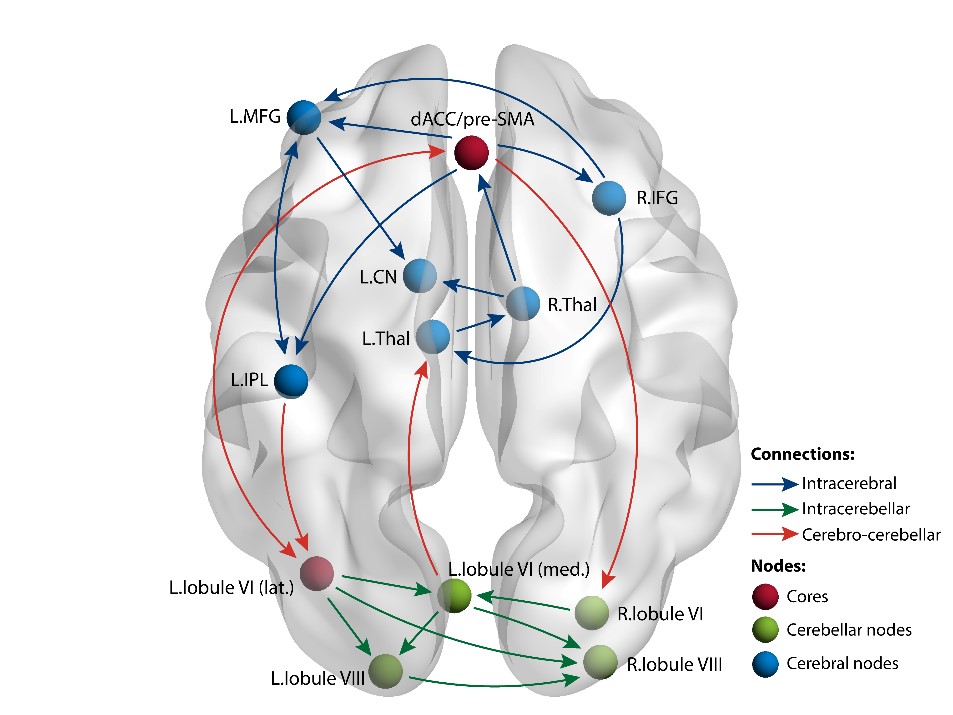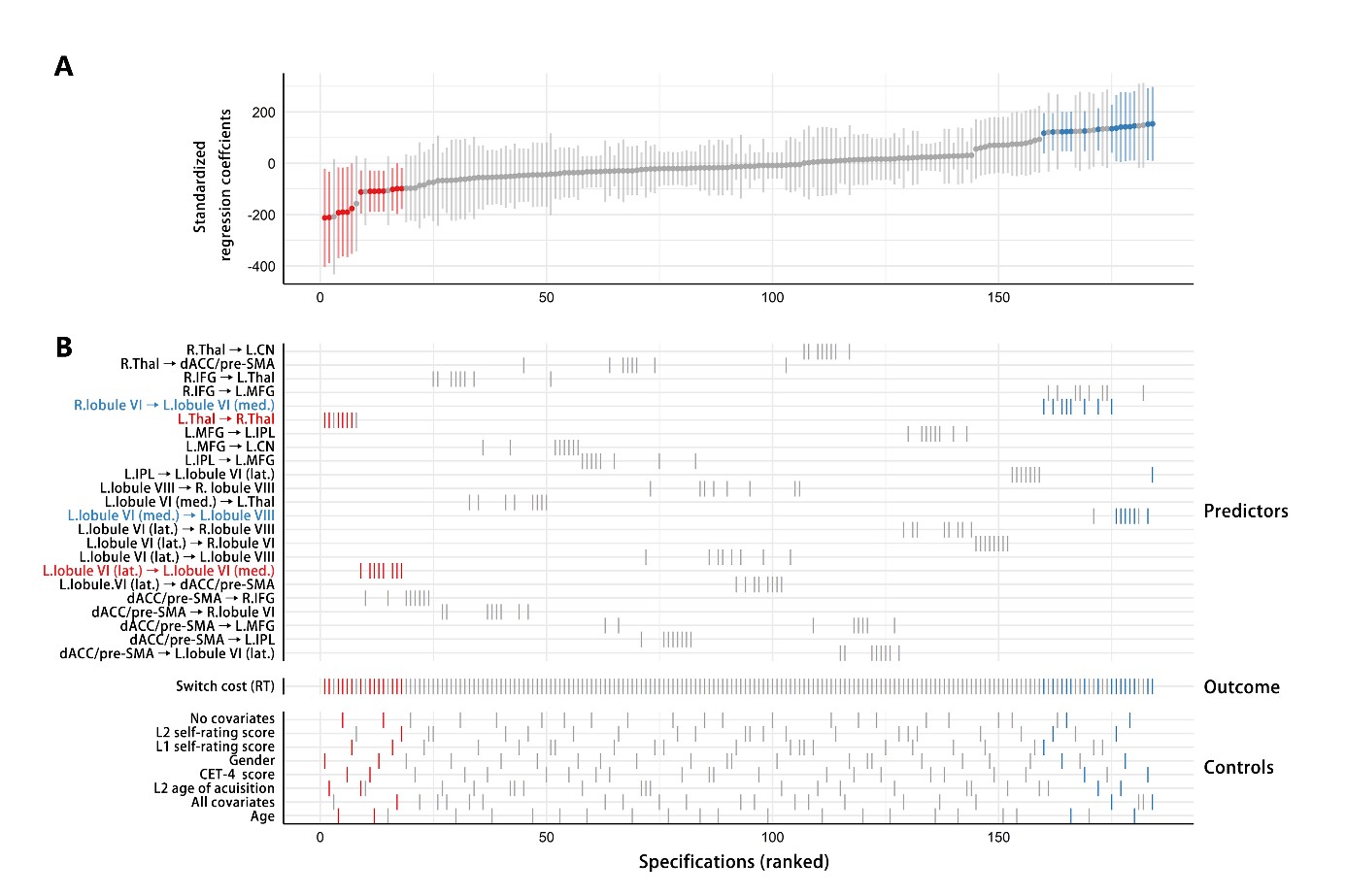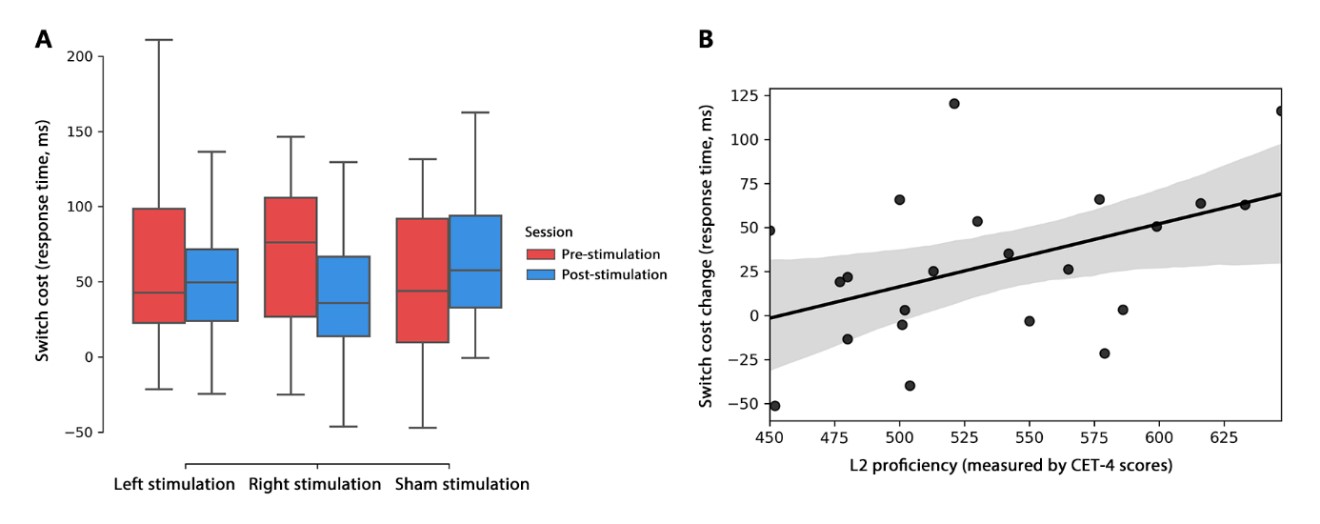Despite its small size, the cerebellum has a surface area equivalent to 80% of the cerebral cortex and contains more neurons than any other nucleus of the brain. Many studies have shown that the cerebellum is responsible for coordinating, stabilizing, and automating movements as the center of motor control in the human brain. However, recent studies have revealed that the cognitive functions of the cerebellum are not limited to motor control. Therefore, an increasing number of studies have become interested in the role of the cerebellum in higher cognitive functions, the neural activity patterns of the cerebellum involved in higher cognitive functions, and the patterns of brain-cerebellum network connections.
In the research paper "The cerebellum and cognition: further evidence for its role in language control" published in Cerebral Cortex in February 2022, Taomei Guo's group at the State Key Laboratory of Cognitive Neuroscience and Learning, Beijing Normal University, used functional Magnetic Resonance Imaging (fMRI) and transcranial direct current stimulation (tDCS) to reveal the neural activity pattern of the cerebellum in language control of bilinguals, the brain-cerebellum network, and its changes in functional neuroplasticity.
In Experiment 1, Chinese-English bilinguals were asked to complete a language switching task while being scanned with fMRI. Specifically, participants named a picture using Chinese or English according to the color of the picture’s frame. It was found that bilinguals' bilateral cerebellar lobules VI and VIII were significantly activated during language switching (Figure 1). The current study further constructed a brain network model using the extended unified structural equation modeling (euSEM) by selecting the activated cerebellar brain regions and brain regions associated with language control identified by previous studies as nodes (Figure 2). The cerebro-cerebellar network took the dorsal anterior cingulate cortex/pre-supplementary motor area and the left lobule VI as cores and contained three modules: the intracerebellar connections, intracerebral connections, and the cerebro-cerebellar connections.

Figure 1. Cerebellar activation pattern

Figure 2. The cerebro-cerebellar connectivity pattern
They further found a significant correlation between several intra-cerebellar connections and subjects' behavioral responses (switch costs) using the specification curve analysis (Figure 3), reflecting differences in the activity of different cerebellar subdivisions and their connections during language control.

Figure 3. The specification curve analysis results
Based on Experiment 1, In Experiment 2, we required participants to complete the same language switching task before and after receiving the brain stimulation, and anodal transcranial direct current stimulation was applied to participants’ bilateral posterolateral cerebellum during the experiment (Figure 4). The results revealed that applying anodal tDCS to the right cerebellum significantly enhanced their behavioral performance of language control by reducing switch costs, and that the optimization of their behavioral performance was positively correlated with their second language proficiency (Figure 5).

Figure 4. The experimental paradigm of Experiment 2 (tDCS)

Figure 5. The results of Experiment 2 (tDCS)
These results suggest that the bilateral cerebellum is jointly involved in bilingual language control and emerges left hemisphere lateralization in connection with the brain such that the left cerebellum and the cerebro-cerebellar control network are more tightly integrated. In addition, the study also revealed differences in neuroplasticity between the bilateral cerebellum, with the right dorsolateral cerebellum possibly being more directly involved in language production and thus producing more direct changes in behavioral performance in response to local focal brain stimulation.
In recent years, a series of studies conducted by Taomei Guo's group (Yuan et al., 2021a, 2021b, Zhang et al., 2021, Wu et al., 2021, Chen et al., 2020, Wu et al., 2022, 2020, 2019) have combined fMRI and event-related potentials (ERPs) to reveal the brain network of language control during bilingual language production. Based these studies, the present study used fMRI and tDCS techniques to reveal the critical role of the cerebellum in bilingual language control, and also proposed an analytical framework for future research to explore the involvement of the cerebellum in higher cognitive functions from the perspectives of (lateralized) activation patterns of the cerebellum, cerebro-cerebellar networks and their relationship with behavior, and changes in functional neuroplasticity induced by training, neuromodulation, or brain injury.
This research was supported by the National Natural Science Foundation of China, the National Key Basic Research Program of China, the Interdisciplinary Research Funds of Beijing Normal University, and the Fundamental Research Funds for the Central Universities.
Article information:
Yuan, Q., Li, H., Du, B., Dang, Q., Chang, Q., Zhang, Z., Zhang, M., Ding, G., Lu, C., & Guo, T. (2022). The cerebellum and cognition: further evidence for its role in language control. Cerebral Cortex. https://doi.org/10.1093/cercor/bhac051
Related articles from Taomei Guo's Lab:
Yuan, Q., Wu, J., Zhang, M., Zhang, Z., Chen, M., Ding, G., Lu, C., & Guo, T. (2021a). Patterns and networks of language control in bilingual language production. Brain Structure & Function, 226(4), 963-977. https://doi.org/10.1007/s00429-021-02218-7
Yuan, Q., Ma, F., Zhang, M., Chen, M., Zhang, Z., Wu, J., Lu, C., & Guo, T. (2021b). Neural interaction between language control and cognitive control: Evidence from cross-task adaptation. Behavioural Brain Research, 401, 113086. https://doi.org/10.1016/j.bbr.2020.113086
Wu, Y. J., Chen, M., Thierry, G., Fu, Y., Wu, J., & Guo, T. (2021). Inhibitory control training reveals a common neurofunctional basis for generic executive functions and language switching in bilinguals. BMC Neuroscience, 22(1), 36. https://doi.org/10.1186/s12868-021-00640-5
Zhang, M., Li, S., Ma, F., Kang, C., & Guo, T. (2020). Mixed language training enhances proactive language control in bilingual language production. Language, Cognition and Neuroscience, 1-15. https://doi.org/10.1080/23273798.2020.1803374
Chen, M., Ma, F., Wu, J., Li, S., Zhang, Z., Fu, Y., Lu, C., & Guo, T. (2020). Individual differences in language proficiency shape the neural plasticity of language control in bilingual language production. Journal of Neurolinguistics, 54. https://doi.org/10.1016/j.jneuroling.2020.100887
Wu, J., Zhang, M., Dang Q.P., Chang Q.W., Yuan, Q., Zhang, Z., Lu, C., Ding, G., & Guo, T. (2022). Language context tunes brain network for language control in bilingual language production. Neuropsychologia, 169, 108204.
Wu, J., Zhang, Z., Chen, M., Yuan, Q., Zhang, M., Yang, J., Lu, C., & Guo, T. (2020). Language context tunes brain network for language control in bilingual language production. Neuropsychologia, 147, 107592. https://doi.org/10.1016/j.neuropsychologia.2020.107592
Wu, J., Yang, J., Chen, M., Li, S., Zhang, Z., Kang, C., Ding, G., & Guo, T. (2019). Brain network reconfiguration for language and domain-general cognitive control in bilinguals. NeuroImage, 199, 454-465. https://doi.org/10.1016/j.neuroimage.2019.06.022